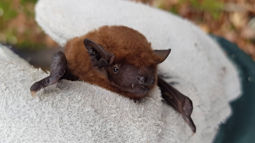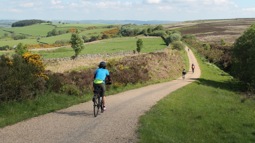Did you know? The National Cycle Network serves more than just those who walk, wheel or cycle. Our team of ecologists have found that at least six species of bats use the Network too. In this blog, Livvy Memarzia one of our ecologists, provides tips on how you can help bats and introduces us to the species you may share your local National Cycle Network route with. Including one species that can live for up to 22 years.
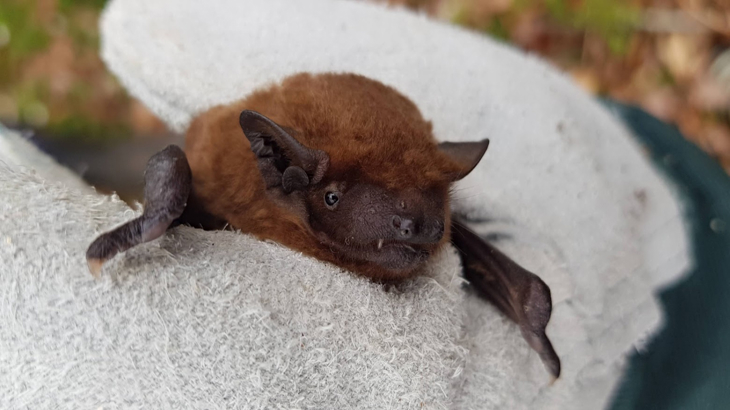
Due to widespread habitat loss and fragmentation, all bat species in the UK are protected by law. Credit: Livvy Memarzia
The Network routes are vital for survival
Bats like to forage for insects along linear routes which they learn to fly along and revisit often.
This is sometimes referred to by ecologists as their ‘core sustenance zone’, a bit like a territory.
Green and blue corridors such as old railways and active canals, like some National Cycle Network routes, are vital habitat features for foraging bats.
How our ecology team records bats
It's hard to say how many of the 17 species of bat in the UK use the Network as they can be elusive and we’re always learning more about them.
But last year, two Walk Wheel Cycle Trust projects in the West Midlands collected baseline data about bat species on the Lias Line and Bilbrook Towpath.
This was done using a simple technique that avoids disturbing the bats by recording their echolocation calls using a device called a bat detector, which has a specialised ultrasonic microphone.
The calls are later downloaded and analysed by an ecologist.
Species can be identified from the echolocation calls because different bat species make their calls at different frequencies.
From this, our team discovered that at least six species use the Network in Bilbrook, Staffordshire, Southam and Warwickshire.
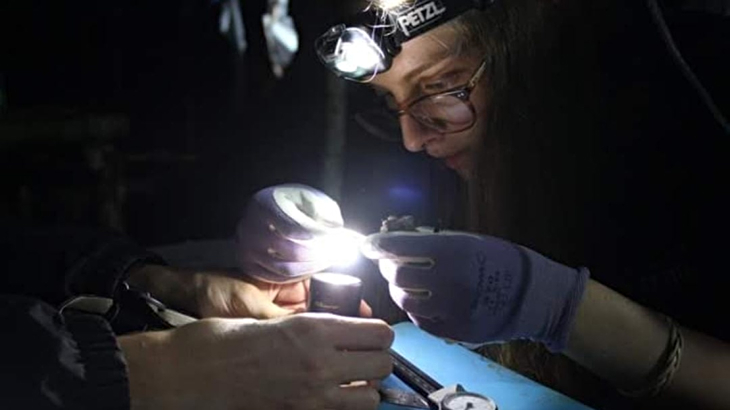
Livvy Memarzia, one of our ecologists, introduces us to the bats you may share your local National Cycle Network route with. Credit: Livvy Memarzia
Common pipistrelle
The common pipistrelle is, as the name suggests, one of the most frequently recorded bats in the UK.
However, it is still subject to habitat loss and has had significant population declines in previous decades.
These tiny creatures weigh up to about 5g, roughly the same as a 20p coin.
Like most bats, they give birth to just one offspring per year. This is part of the reason that bats are so threatened as their populations cannot ‘bounce back’ quickly.
If young are lost, as the breeding cycle is quite long compared to other mammals that can breed multiple times a year or have a litter of offspring at once.
Soprano pipistrelle
The soprano pipistrelle is closely related to the common pipistrelle and was actually thought to be the same species until the 1990s when advancements in sound recording technology meant that researchers noticed some bats within the species-group echolocating mostly around 45kHz (now known as the common pipistrelle).
And some bats had a higher-pitched echolocation call at around 55kHz (now understood to be the soprano pipistrelle). Thus, the species got its name.
The bats can generally be distinguished by its slightly smaller size, slightly paler face and different vein patterns on the wing membrane.
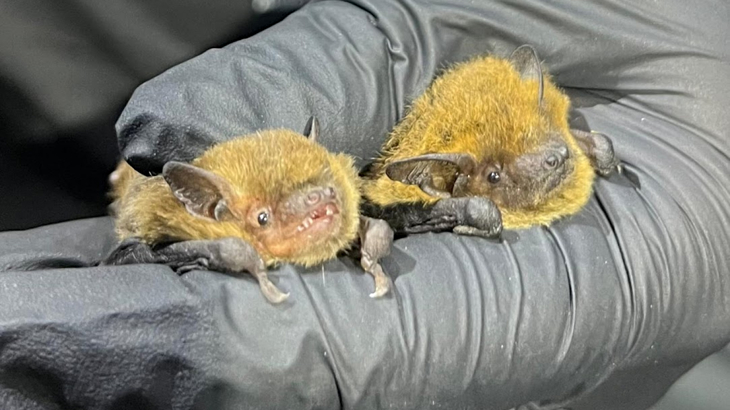
Soprano (left) and common Pipistrelle. Credit: Livvy Memarzia
Noctule
The noctule is one of Britain’s largest bat species, with some adult individuals weighing well over 30g with a wingspan of over 30cm.
While this is quite large in UK bat terms, that is roughly the weight and length of a standard school ruler – so not really massive, especially compared to other bat species around the world (of which there are over 1,500).
These bats have a varied diet but love to eat beetles such as cockchafers when they become abundant in summer months, so they form an important part of their wider ecosystem.
Sometimes they are predated upon by owls, hawks and other birds of prey.

The noctule bat is one of Britain’s largest bat species. Credit: Livvy Memarzia
Leisler’s bat
The Leisler’s bat is another large bat, quite closely related to the noctule, but it can often be distinguished from that species by its lovely golden fur, which is often longer around the head and shoulders like a lion’s mane.
They like to change where they roost every few days and may have dozens of different roosting sites across the year; this might be to evade predators or to try and avoid parasites.
This makes them susceptible to habitat loss as they need so many different roosting sites through their annual life cycle.
This species has a low-pitched echolocation call, meaning that small children with good hearing can sometimes discern the sound it makes without the aid of a bat detector.
However, it is very rare that an adult ear can pick up this sound, as the human ear loses sensitivity quickly as we age.
Daubenton’s bat
The Daubenton’s bat is a species belongs to the Myotis genus (mouse-eared group of bats), with large feet that it uses to skim insects from the surface of water.
As a result, it is a species highly associated with wetland habitats, waterbodies and watercourses.
If you take a walk along a canal or river path in summer and see bats catching midges just above the water, it may well be a Daubenton’s bat.
They like to roost in tunnels and bridges in summer and usually retreat to hibernate in caves or mines over winter.
They have been known to live for up to 22 years.
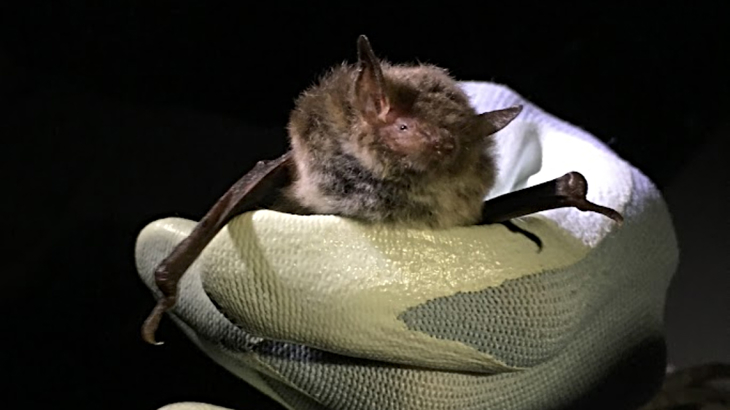
The Daubenton’s bat species have been known to live for up to 22 years. Credit: Livvy Memarzia
Brown long-eared bat
These charming bats have ears almost as long as their body, which they use to listen out for their own calls or even the sounds of their prey – like a moth’s wings beating or a spider walking on a leaf.
They're sometimes called the ‘whispering bat’, because their call is very quiet compared to other bats.
Since they have evolved to be able to hear so well, they make stealthy, quiet calls which cannot be easily detected by their prey.
So, this cute-looking bat is actually a bit of an assassin.
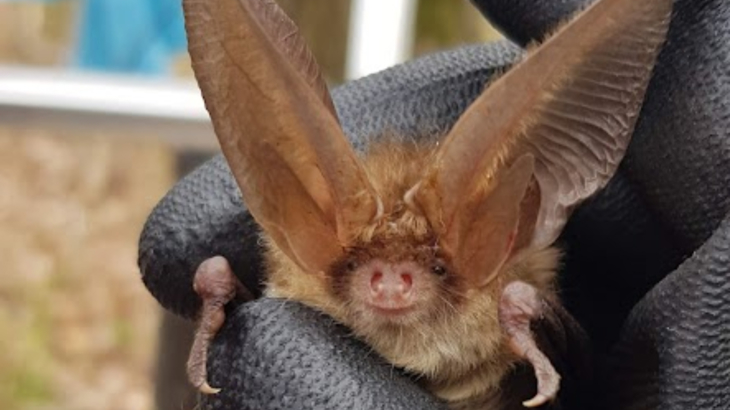
How can you help bats on the Network and beyond?
- Buy or borrow a bat detector (there are even some that can plug into your phone) and take a walk, wheel or cycle with a friend or family member along the National Cycle Network at dusk in summer – when bats are most active. Record the species you’ve heard and seen on the app iRecord, adding the tags #WalkWheelCycleTrust and #Sustrans so that data about the Network is kept together and accessible to the Walk Wheel Cycle Trust ecology team.
-
Get in touch with Walk Wheel Cycle Trust's ecologists to volunteer and help us monitor bats on the Network. Livvy Memarzia, the Walk Wheel Cycle Trust ecologist based in Leeds, plans to lead some bat box checks in the West Yorkshire area in summer 2026 but there may be other activities we can arrange for volunteers if we have a few people who can co-ordinate in one area/region. Opportunities in the rest of the UK may be available in the future so please register your interest via the above contacts if you are keen to get involved with future bat conservation work in your area, especially if you have ideas for projects.
- Keep your cat indoors at night - cats are one of the main threats to bats reported every year by bat care volunteers, and injuries to bats from cat attacks have very high fatality rates. If you can’t keep your cat in at night, try to keep them in at dusk in summer as this is when bats are emerging from their roosts and at their most vulnerable.
- Join your local bat group, and/or the Bat Conservation Trust.
Contact our team of England-based ecologists:
livvy.memarzia@walkwheelcycletrust.org.uk (for Northern England).
jim.whiteford@walkwheelcycletrust.org.uk (for Southern England).
-

Find out how you can support local wildlife
Your actions can help animals thrive in gardens, green spaces and on traffic-free paths near you.



